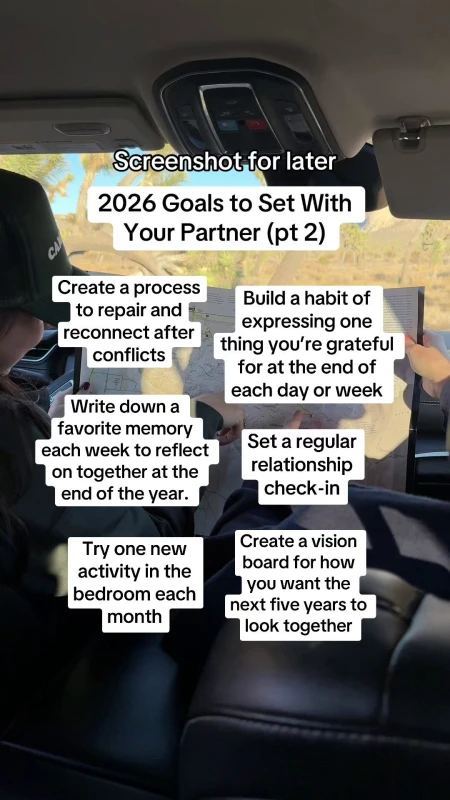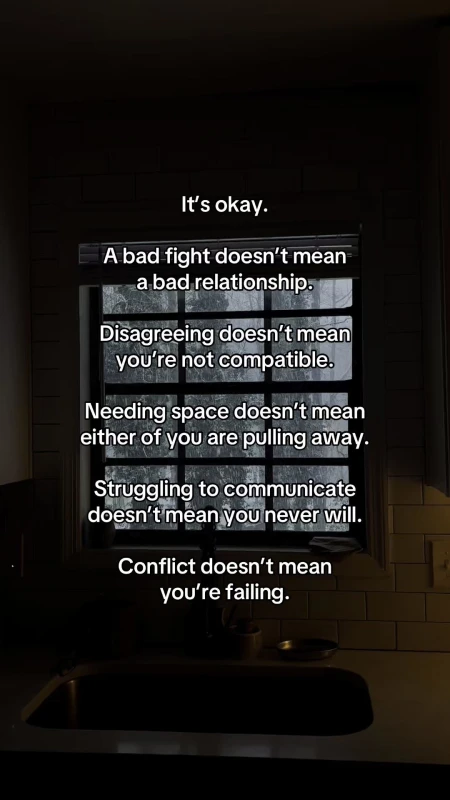ower imbalances in relationships can lead to frustration, conflict, and feelings of being unheard or undervalued. These dynamics often arise when one partner holds more control over decisions, emotions, or resources. They can, however, be addressed with intentional effort. Here’s what you need to know:
- Types of Imbalances: Emotional, decision-making, financial, and social.
- Signs to Watch For: One-sided decisions, dismissed opinions, fear-driven interactions, unequal responsibilities, and emotional manipulation.
- Causes: Personal history, differences in communication styles, and societal influences.
- Solutions:
- Start honest conversations using “I” statements to express concerns.
- Actively listen and validate each other’s feelings.
- Share responsibilities fairly, including emotional and household tasks.
- Use tools like digital platforms or professional couples counseling for guidance.
Balancing power in a relationship strengthens trust, intimacy, and mutual respect. It’s about creating a partnership where both individuals feel valued and heard.
In this blog, we'll explain what power imbalances are in relationships and the steps required to fix them.
What Are Power Imbalances in Relationships?
Power imbalances in relationships occur when one partner has more influence or control than the other, creating an uneven dynamic in decision-making. This imbalance can affect everything from daily routines to major life milestones.
What Power Imbalances Look Like
Power imbalances often show up in four key areas:
- Emotional power: One partner consistently controls or dictates the emotional tone of the relationship.
- Decision-making power: One person makes most of the important choices without meaningful input from the other.
- Financial power: Control over money, spending decisions, or access to resources is held by one partner.
- Social power: One partner limits or influences the other's ability to maintain friendships, family ties, or social activities.
Common Relationship Patterns
When power imbalances take root, they often create predictable and unhealthy patterns in relationships. One such pattern is the demand-withdrawal dynamic, where one partner frequently raises concerns or requests changes, while the other avoids the conversation, becomes defensive, or shuts down entirely. This dynamic is linked to higher rates of depression and an increased risk of divorce.
Another common pattern is the distancer-pursuer dynamic. Here, one partner seeks more connection, intimacy, or attention, while the other pulls away or creates emotional distance. Over time, this can erode trust and closeness.
Fear-shame cycles are also prevalent in imbalanced relationships. In these cycles, one partner feels afraid to express their needs or opinions, while the other experiences shame over their controlling behavior but feels unable to change.
How Power Imbalances Affect Your Relationship
When one partner consistently holds more power, the other may begin to lose confidence, feel unheard, or withdraw emotionally. This deepens the distance between partners and makes true intimacy, built on trust and vulnerability, difficult to maintain. Without mutual validation and a sense of safety, relationships can become more prone to conflict or instability. While not all power imbalances lead to abuse, ongoing inequality can create conditions where emotional or verbal harm is more likely to occur if left unaddressed.
Lee Phillips, LCSW, underscores the importance of mutual respect:
"What it comes down to is all partners want to feel seen and heard. If they can validate and show empathy, this brings healing and balance to the relationship".
Chronic power imbalances can also take a toll on mental and physical health. Research shows that relationships with balanced power dynamics tend to be more satisfying, foster stronger emotional well-being, and even boost libido for both partners.
Once you understand how power imbalances manifest and their effects, the next step is learning to identify their warning signs and underlying causes.
How to Spot Power Imbalances and Their Causes
Identifying power imbalances requires honest reflection and a close look at everyday interactions. Below, we’ll break down the key warning signs and the underlying causes of these dynamics.
Warning Signs to Watch For
Power imbalances don’t happen overnight - they build up over time. Here are some red flags to keep an eye on:
- One-sided decision-making. If one partner consistently makes choices without meaningful input from the other, it points to an imbalance. This often reflects a deeper pattern where one person’s preferences dominate the relationship.
- Dismissed opinions. When one partner’s thoughts, needs, or feelings are regularly ignored or minimized, it’s a clear sign of unequal respect. This can show up as condescending or dismissive behavior.
- Fear-driven interactions. If someone feels they must constantly monitor their words or actions to avoid upsetting their partner, it creates a stifling dynamic where genuine expression is suppressed.
- Unequal responsibilities. Whether it’s household tasks, childcare, or finances, an imbalance occurs when one partner shoulders most of the burden without equal support.
- Isolation tactics. A partner may attempt to control or limit the other’s access to friends, family, or support networks by restricting communication or social activities.
- Emotional manipulation. Using guilt, threats, or other manipulative tactics to sway decisions instead of engaging in fair discussions is a major warning sign.
- Ignored boundaries. When one partner consistently disregards the other’s comfort, limits, or personal space, it signals that respecting boundaries has become an afterthought.
Research backs the importance of spotting these patterns early. A 2021 study found that balanced power dynamics were linked to greater relationship satisfaction, higher libido, and improved emotional well-being. On the flip side, those in imbalanced relationships reported increased anxiety and depression.
What Causes Power Imbalances
Recognizing the signs is one thing, but understanding the root causes is just as critical. Power imbalances often stem from a combination of internal, relational, and external factors.
- Internal factors are tied to personal history and self-perception. For example, attachment styles formed in childhood or low self-esteem may lead one partner to relinquish power in an attempt to maintain a connection.
- Relational factors arise from the dynamics between partners. Differences in knowledge or expertise can unintentionally give one person more authority in decision-making. Similarly, if one partner seems less emotionally invested, they may end up holding more power. Communication styles also play a role - more assertive partners may dominate discussions over time.
- External factors are shaped by societal and cultural influences. Socioeconomic disparities, for instance, can make one partner financially dependent, complicating the balance of power. Traditional beliefs - like the expectation that men should be the primary breadwinners while women handle caregiving - can also skew dynamics. Additionally, limited social networks or restrictive workplace policies may further cement these imbalances.
Sometimes, personal insecurities or past trauma drive controlling behaviors. A need for security or fear of being hurt again can push individuals to seek control as a defense mechanism.
Steps to Fix Power Imbalances in a Relationship
Once you've identified the warning signs and underlying causes of power imbalances in your relationship, it's time to take action. Both partners need to work together intentionally to create a healthier, more balanced dynamic where each person feels respected and heard.
Start Honest Conversations
The first step in addressing power imbalances is having open, honest conversations. These discussions should allow both partners to express their feelings and needs without fear of judgment.
"Honest conversations start with believing that both you and the other person are naturally creative, resourceful, and whole. From that vantage point, we're all capable, and compelled I think, to see and be seen; this includes our hopes, fears, insecurities, dreams, strengths, and weaknesses. We then muster the courage to share what we're really thinking and feeling, as well as muster the positive regard for our fellow humans to do so with grace and tact." - Deb Mashek, Ph.D.
Before starting the conversation, take some time to reflect on your own emotions and needs. This self-awareness will help you communicate more effectively and prevent reactive responses.
When you're ready to talk, use "I" statements to express your concerns. For example, instead of saying, "You always make decisions without me", try saying, "I feel left out when major decisions are made without my input." This approach reduces defensiveness and fosters a safer emotional environment.
Choose a calm, low-stress time to bring up the topic. Acknowledge the issue by framing it around the dynamic rather than assigning blame. For instance, you could say, "I've been thinking about how we handle household decisions, and I’d like to talk about how we can make sure we both feel more involved." After sharing your thoughts, make sure to actively listen to your partner's perspective as well.
Listen and Understand Each Other
Real change happens when both partners feel truly heard and understood. Active listening is a powerful tool for building mutual understanding and addressing the emotions tied to power imbalances.
"What it comes down to is all partners want to feel seen and heard. If they can validate and show empathy, this brings healing and balance to the relationship." - Lee Phillips, LCSW
When your partner speaks, give them your full attention. Put away distractions, maintain eye contact, and use gestures like nodding to show you're engaged. Paraphrase what they say to confirm your understanding. For instance, if your partner mentions wanting more involvement in financial decisions, you could respond with, "It sounds like you’d like to have more input when we plan our budget."
Ask open-ended questions to encourage deeper discussion, such as "Can you explain why this matters to you?" or "What would help you feel more supported here?" If your partner shares something difficult, acknowledge their feelings by saying something like, "It seems like you feel overwhelmed handling all the financial planning on your own." Sometimes, simply being heard can pave the way for finding solutions together.
Once you've established mutual understanding, you can move on to addressing the practical aspects of balancing responsibilities.
Share Responsibilities Fairly
A fair division of responsibilities is essential for addressing power imbalances. When tasks are distributed equitably, both partners feel respected, supported, and valued.
Start by listing all household responsibilities, from daily chores to financial planning. This can help reveal any existing imbalances. When dividing tasks, consider each partner's strengths, preferences, and schedules. Remember that emotional labor - such as remembering important dates, maintaining family connections, and providing emotional support - is just as important as physical chores.
Set clear expectations about who handles what and when. Tools like chore charts or rotating task schedules can help clarify responsibilities. Be flexible when circumstances change, and plan regular check-ins to ensure the arrangement continues to feel fair.
"By acknowledging the relationship power dynamic, any of the themes can be addressed, whether it's a major life decision or a simple disagreement." - Emily Heard, MFT
Balancing responsibilities is about more than avoiding conflict - it's about building a partnership where both individuals feel empowered and capable of contributing to your shared life.
Schedule Regular Check-Ins
Scheduling regular relationship check-ins ensures that both partners’ voices are heard and helps prevent power imbalances from taking root.
Consistency is the cornerstone of successful check-ins. Knowing there’s a dedicated time to discuss concerns allows both partners to prepare and approach conversations constructively, avoiding the risk of minor issues snowballing into larger conflicts.
Even starting with a 10-minute weekly check-in can lead to meaningful improvements. These sessions provide a space to address concerns, celebrate progress, and work collaboratively on solutions.
Choose a time when both partners are relaxed, free from distractions, and able to give their full attention. Treat this time as sacred - avoid scheduling other commitments during this period. A comfortable, familiar setting can further encourage open and honest communication.
During check-ins, focus first on the positive. Celebrate small wins or express appreciation before diving into challenges. Keeping a list of topics to discuss ensures nothing important gets overlooked, and tools like conversation cards or guided prompts can make these discussions even more productive.
The frequency of check-ins can vary depending on your needs. Weekly check-ins work well for addressing immediate concerns, while monthly sessions can focus on broader relationship goals and long-term health. Many couples find that combining brief weekly touch points with deeper monthly discussions strikes the right balance.
Different Ways to Address Power Imbalances
Once you’ve identified power imbalances in your relationship, the next step is choosing an approach to address them. The best method depends on your communication style, the severity of the imbalance, and how deeply rooted the patterns are. Let’s explore some options to help you decide what might work best for your situation.
Comparing Your Options
Every couple has unique needs when it comes to tackling power dynamics. Some can navigate these issues on their own, while others may benefit from structured tools or professional help. The ultimate goal is to build a partnership that feels balanced and respectful.
Self-guided approaches are ideal for couples who already communicate well and feel comfortable being open with each other. This might involve reading relationship books together, using worksheets to identify patterns, or scheduling regular check-ins to discuss dynamics. You can work at your own pace and focus on what matters most to your relationship. However, this method requires both partners to stay motivated, and it may not be effective for deeply ingrained patterns or when one partner resists change.
Structured digital platforms offer a blend of independence and expert guidance. These platforms provide virtual sessions led by professionals, along with science-based therapy exercises and tools to help couples work through issues. They’re especially helpful for busy couples, those in long-distance relationships, or partners who prefer a less formal approach to resolving conflicts. While convenient and flexible, this option does require comfort with technology and may not fully address more severe imbalances.
Professional counseling is often necessary for couples dealing with severe imbalances or emotional manipulation. Licensed therapists can uncover underlying patterns that might go unnoticed and offer tailored strategies to tackle complex situations.
Self-Guided Approaches
Best for couples who already have strong communication and a shared willingness to change. These methods are flexible, low-cost, and private, making them a great option for those who prefer to work independently. However, they require strong motivation and may overlook blind spots. They also tend to be less effective for addressing more severe relationship issues.
Professional Counseling
Recommended for couples facing entrenched patterns, significant power imbalances, or emotional manipulation. This approach offers specialized expertise and personalized strategies tailored to complex dynamics. While highly effective, it may come with a higher cost, possible scheduling difficulties, and can feel intimidating at first.
Timing is also key. If you’re dealing with a crisis or safety concerns, professional help is critical. For ongoing frustrations that don’t pose immediate danger, starting with self-guided work or a structured platform can be a good first step. You can always transition to professional counseling if additional support becomes necessary.
Tools for Long-Term Success
Maintaining balance in a relationship isn’t a one-time fix - it’s an ongoing process that requires commitment and consistent effort. By combining structured tools and open communication, couples can create routines that help sustain equality and harmony over time.
Using Digital Support Platforms
Digital platforms offer a modern way to access expert guidance while accommodating busy schedules. These tools can be instrumental in addressing and sustaining progress on power dynamics in relationships.
OurRitual is one such platform, offering weekly virtual sessions led by experts. These 40-minute sessions are paired with science-backed exercises, drawing from approaches like the Gottman Method and emotion-focused techniques. The goal is to help couples identify issues, break unhelpful patterns, and build empathy and conflict resolution skills. Subscriptions start at $208 per month (or $52 weekly) and include personalized learning plans and exclusive video resources.
For couples where one partner may be hesitant, OurRitual allows for an individual to start before transitioning to joint sessions. This flexibility creates a safe space for the more reserved partner to explore relationship dynamics without pressure.
The results are compelling: 91% of users report improvements in their relationship within four weeks, 88% feel more hopeful, and 94% experience reduced anxiety around relationship challenges.
Building Better, More Balanced Relationships
Achieving balance in a relationship isn’t a one-time effort - it’s a continuous journey that requires commitment and growth from both partners. Equality in a relationship grows deeper over time, strengthening the bond you share.
A key pillar of this balance is open communication. When both partners feel safe sharing their thoughts and emotions without fear of judgment or dismissal, true intimacy can thrive. This isn’t about saving honest conversations for conflicts or planned check-ins - it’s about making open dialogue a natural part of your daily interactions. When communication becomes second nature, it becomes easier to address imbalances before they grow into larger issues.
Another critical element is active listening. Listening to understand - not just waiting for your turn to speak - allows your partner to feel valued and heard. By stepping into their shoes and considering how they might experience situations differently, you cultivate emotional awareness. This practice not only deepens your connection but also helps prevent misunderstandings and power imbalances.
Sharing emotional responsibilities is just as important as dividing household tasks. Research shows that couples who equitably share responsibilities - both emotional and practical - report higher levels of happiness and satisfaction.
"A loving, supportive relationship where your responsibilities are equitably shared makes you feel appreciated, valued, and respected. Feeling this way consistently creates the happiness required to attain relationship success." – Susan Blackburn, Registered Psychologist
Clear boundaries are another cornerstone of balanced relationships. Respecting each other’s limits and expressing your needs openly fosters mutual respect and preserves individual autonomy, even as you grow closer as a couple.
Sometimes, seeking outside help can make a big difference. Different online support platforms for couples provide structured guidance to help couples maintain balance and work through challenges together.
One final tip: view feedback as an opportunity to grow, not as criticism. Ask your partner how you’re doing and be open to making adjustments. These conversations are a chance to strengthen your bond and ensure that both partners feel equally valued and empowered. When feedback is treated as a tool for growth, it helps prevent power struggles and keeps your relationship grounded in mutual respect.
Building a balanced relationship takes time, effort, and patience. By embracing open communication, practicing empathy, and sharing responsibilities, you create a partnership where both individuals feel heard, respected, and free to be their authentic selves.
FAQs
How can I talk to my partner about power imbalances without causing tension?
When discussing sensitive topics, try using "I" statements to express your feelings without assigning blame. For example, you could say, "I feel like decisions are often made without my input, and I’d like us to work together more." This approach keeps the focus on your perspective, making the conversation less likely to feel confrontational.
It’s also important to create a calm and supportive space where both of you feel comfortable sharing openly. Practice active listening by truly hearing what your partner is saying, acknowledging their feelings, and responding thoughtfully - even if you don’t completely agree. The aim here isn’t to win an argument but to build understanding and work together as a team.
For couples seeking structured ways to improve communication, tools like OurRitual provide expert-led resources that are flexible and designed to help navigate these kinds of conversations, ultimately strengthening your relationship.
How can we create a fair balance of responsibilities in our relationship?
To strike a fair balance, start by having an open conversation about responsibilities. Take time to understand each other's strengths, preferences, and limits. Once that's clear, define who will take on specific tasks while keeping things flexible enough to adapt when needed. Regular check-ins can be a great way to make sure both partners feel valued and supported.
Showing appreciation for each other's efforts, even for the little things, helps create a positive and encouraging atmosphere. If it's an option, think about outsourcing certain chores or splitting them differently to ease stress and make more room for quality time together. These small changes can make a big difference in creating a more balanced and cooperative partnership.
How can couples recognize and address power imbalances, and when should they seek outside support?
Power imbalances in relationships often manifest through repeated arguments, lingering resentment, or one partner consistently taking control of decisions. Spotting these patterns early on is crucial for building a healthier, more balanced connection.
When these challenges persist or feel overwhelming, seeking outside support can be a game-changer. This might involve consulting relationship professionals or exploring tools like OurRitual. Their expert-led virtual sessions and customized exercises are designed to help couples strengthen communication and rebuild trust. Taking these steps can pave the way for a more harmonious and fulfilling partnership.























